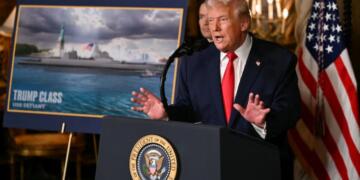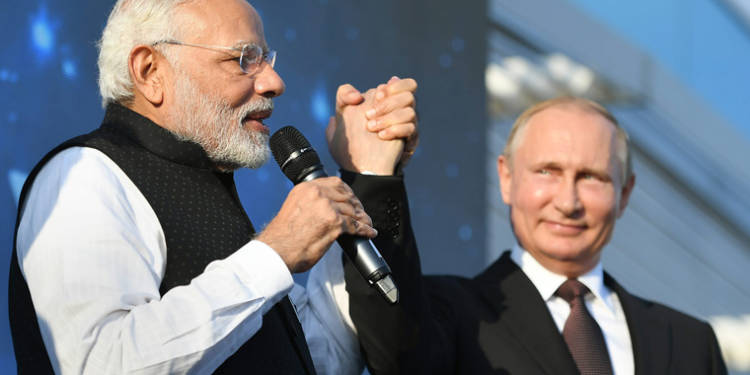The border disputes between India and China have escalated into the loss of lives for the first time since 1975. The level of tensions between the countries itself has touched a new zenith after the Monday bloodshed in Galwan Valley area, and the Modi government has now played a smart diplomatic move by securing support from Russia amidst soaring tensions.
According to reports, India is going to fast-track the purchase of fighter jets- 21 MiG 29s and 12 Sukhoi Su-30 MKI aircraft from Russia. The timing of the move is significant- it comes amidst heightened tensions between New Delhi and Beijing.
According to ANI, the Indian Air Force (IAF) was already planning to buy the fighter aircraft but now the proposal will be fast-tracked. This is more of a diplomatic manoeuvre than a plain strategic move, and the message is clear- India values Russia’s friendship and counts on it in times of trouble.
This is also a crucial move in the sense that it comes days ahead of a trilateral meet between Russia, India, and China at the Foreign Ministers’ level. According to Zee News, top sources have said that Moscow has assured support to New Delhi in its efforts to resolve border disputes with China in view of the tense stand-off situation.
New Delhi and Moscow enjoy warm ties traditionally, and Prime Minister Modi and Russian President Vladimir Putin have also shown a high spirit of cooperation. The two leaders have engaged several times this year including on the issue of COVID-19 public health emergency.
The 33 additional fighter jets will add to India’s firepower and New Delhi was already planning to buy these additional aircraft, but it isn’t as if the fighter jets are indispensable.
They are not at the forefront of the IAF’s expansion ambitions, rather the IAF is more interested in the Light Combat Aircraft (LAC) Tejas, HAL Tejas Mk2- a further development of HAL Tejas, Rafale fighter jets, multi-role fighter aircraft and Advanced Medium Combat Aircraft (AMCA).
The move is symbolic, as India seeks Russia’s tacit support, and more of a hint as to where Russia will tilt in case matters escalate even further between India and China.
This is even more significant given the ongoing show of camaraderie between China and Russia during the Coronavirus Pandemic. Russia has not joined the global backlash against China for spreading the Wuhan virus, and initially, it seemed as if Moscow was tilting towards the Dragon.
However, a hotbed of insecurities exists beneath the surface of a show of camaraderie- China is stealing Russia’s military technology, thus hampering its massive defence export sector, border tussles exist between Russia and China, and China has been investing heavily in Russia’s Far East to exploit its natural resources- a cause of concern for Moscow.
Russia and China are ideological competitors- Russia is Redder than China, while both share an affinity for authoritarianism. The Dragon is growing bigger and bigger, and Russia knows that it is an expansionist giant that cannot be trusted as it has a tendency to backstab.
On the other hand, India and Russia maintain solid ties, especially in the defence sector. India is a bulk purchaser of Russian arms and defence equipment, especially after sanctions were imposed on Russia due to the Crimea incident of 2014, New Delhi made it a point to purchase the S-400 Triumf air defence system from Russia.
While China harms the Russian defence industry through Intellectual Property theft and copied designs, India is one the most valuable purchasers of Russian defence equipment, something that President Putin appreciates.
Russia knows that India will not backstab it unlike China, a highly irresponsible and volatile player.
By selling the 33 additional aircraft, Russia is giving a signal about which side it will favour if things spiral out of control. Leading State-owned media outlet in Russia, Russia Today’s coverage of the Ladakh stand-off has been favourable towards India that comes as a surprise amidst the international relations enthusiasts who speak about the Russia-China axis.
Nevertheless, Russia would want to play the role of a pacifier rather than immediately choosing a side. The stage is set with the upcoming virtual conference of the Russia-India-China trilateral on June 23.
Initial signals from Russia hint at that the country wants to encourage de-escalation. Russian Foreign Minister Sergey Lavrov had said, “It has already been announced that the military representatives of India and China have made contact, they are discussing the situation, discussing measures to de-escalate it. We welcome this.”
It is in Russia’s strategic interests to ensure a de-escalation of tensions, but in the worst-case scenario, if things move towards an all-out military confrontation, Russia will have to pick sides. The fast-tracked, government-to-government fighter jets deal worth Rs. 6,000 crores is only a hint as to which side Moscow will favour in such an eventuality.

































